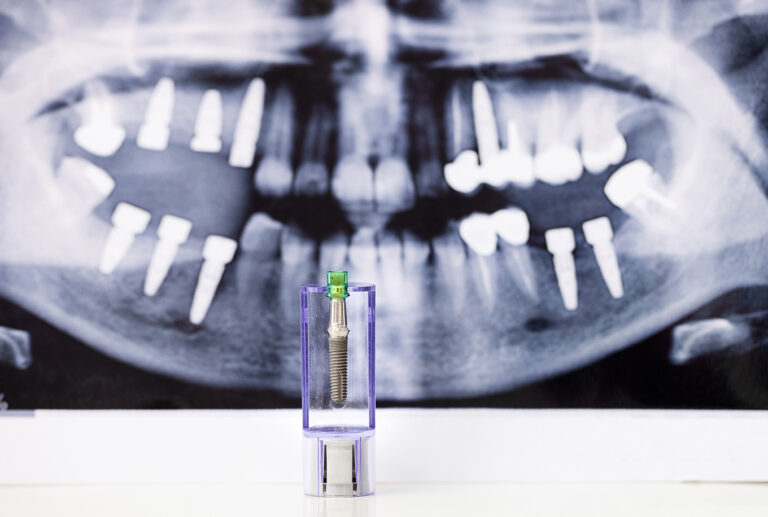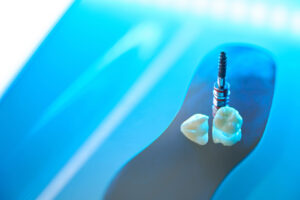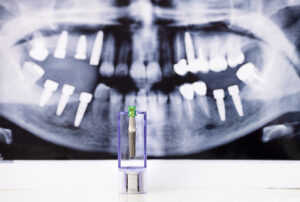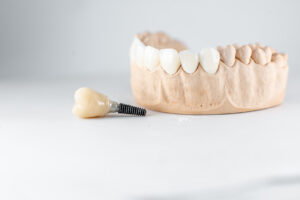Ensuring a smooth recovery after dental implant surgery is key to achieving strong bone integration, minimizing discomfort, and guaranteeing the long-term success of your beautiful new smile. In this comprehensive guide to recovering from dental implant surgery, you’ll discover the typical healing timeline, effective strategies for managing pain, recommended dietary choices, essential oral hygiene practices, tips for preventing complications, and the best approaches for maintaining your implant’s health for years to come. Dr. Igor Kaplansky’s extensive experience in implant dentistry and oral surgery informs every piece of advice, giving you the confidence you need to move forward with your treatment plan.
What’s the Typical Recovery Timeline for Dental Implants?
Recovering from dental implant surgery is a phased process, beginning with immediate post-operative care and concluding with complete bone integration over several months. Understanding each stage will help you manage your symptoms effectively and follow the best aftercare practices. Here’s a general overview before we delve into the specifics of each phase.
What Can You Expect in the First 24-48 Hours Post-Surgery?
During the initial two days, some discomfort, minor bleeding, and swelling are completely normal. Gauze placed over the surgical site helps manage any oozing, while intermittent application of ice packs can reduce swelling. It’s important to rest with your head elevated and avoid any strenuous activities to support the formation of a stable blood clot and tissue stabilization.
How Does Soft Tissue Heal Between Days 3 and 14?
As bruising and swelling begin to subside, the soft gum tissue will start to close around the implant site. Gentle rinsing with warm salt water can help keep the area clean without disturbing any sutures. You can begin incorporating lukewarm, soft foods into your diet at this stage, ensuring you get adequate nutrition while avoiding any excessive pressure on the surgical area.
What Is Osseointegration and How Long Does It Typically Take?
Osseointegration is the vital process where your jawbone fuses with the titanium implant, creating a solid foundation for your future crown or bridge. Below is a structured timeline outlining the key milestones in bone healing:
Stage | Typical Duration | Key Outcome |
Initial Blood Clot Formation | 0–48 hours | A protective clot forms to stabilize the tissues. |
Soft Tissue Closure | 3–14 days | Gums seal around the implant; stitches may dissolve. |
Early Bone Attachment | 2–6 weeks | Bone cells begin to connect with the implant surface. |
Mature Osseointegration | 3–6 months | Complete fusion of bone to implant for lasting stability. |
Optimizing Osseointegration in Dental Implantology: A Cross-Disciplinary Review of Current and Emerging Strategies
Osseointegration, defined as the direct structural and functional connection between living bone and the implant surface, is crucial for the stability and long-term success of dental implants. This process is influenced by factors such as implant design, surface characteristics, surgical techniques, and host-related conditions, involving stages of bone incorporation, adaptation, and remodeling.
This research directly supports the article’s explanation of osseointegration as a critical, multi-stage process for dental implant stability and long-term success.
This timeline highlights how gradual bone remodeling builds a strong foundation for your implant, guiding you toward the final restoration phase.
What Are the Key Milestones in the Dental Implant Healing Process?
Successful recovery progresses through these sequential milestones:
- Formation of a stable blood clot to shield the underlying bone.
- Soft tissue sealing and a reduction in inflammation.
- Initial migration and attachment of bone cells to the implant surface.
- Gradual maturation of the bone matrix around the implant.
- Placement of the final restoration once osseointegration is confirmed.
Each milestone signifies progress toward the secure placement of your final dental prosthesis, setting the stage for a durable and aesthetically pleasing result.
How Can You Effectively Manage Pain After Dental Implant Surgery?
Effective pain management involves a combination of appropriate medication, supportive care, and gentle techniques to minimize discomfort and swelling.
What Level of Pain Is Considered Normal During Recovery?
Mild to moderate aching or throbbing around the implant site is expected during the first week. If you experience sharp or increasing pain beyond 7–10 days, it could indicate a complication. Understanding this distinction allows you to confidently follow standard care protocols and seek assistance if your symptoms worsen.
Which Over-the-Counter and Prescription Medications Are Recommended?
You can start with nonsteroidal anti-inflammatories (NSAIDs) to help reduce pain and swelling, then switch to acetaminophen if needed. Prescription analgesics may be recommended for more severe pain.
- Ibuprofen is effective for both pain relief and controlling inflammation.
- Acetaminophen can be used to manage discomfort when anti-inflammatories are not suitable.
- Opioids or combination analgesics prescribed by your dentist can provide additional relief for significant pain.
Post-operative pain management in dental implant surgery: a systematic review and meta-analysis of randomized clinical trials
A systematic review and meta-analysis found that nonsteroidal anti-inflammatory drugs (NSAIDs) significantly reduce post-operative pain and the need for additional analgesics after dental implant surgery. Pain management is often most critical during the initial 72 hours following implant placement.
This study provides evidence for the article’s recommendations on using NSAIDs for effective pain management and highlights the critical period for pain control after dental implant surgery.
Balancing the effectiveness and safety of your pain relief plan ensures you remain comfortable without overmedicating.
What Non-Medication Methods Can Help Reduce Pain and Swelling?
Applying cold compresses to your cheek for 15 minutes every hour can help limit swelling. Keeping your head elevated while resting promotes fluid drainage, and gentle jaw exercises initiated after 48 hours can help reduce stiffness. These simple measures significantly enhance your comfort and support a faster recovery.
What Should You Eat After Dental Implant Surgery? Dietary Guidelines for Recovery
Following a careful diet is essential for protecting your healing tissues, preventing the dislodging of blood clots, and providing the necessary nutrients for bone regeneration.
Which Soft and Liquid Foods Are Best in the Initial Recovery Phase?
During the first week, focus on foods that require minimal chewing and help you stay hydrated:
- Smoothies and blended soups packed with protein and vitamins.
- Yogurt, applesauce, and well-mashed potatoes for a smooth consistency.
- Broths and protein shakes served at room temperature to support healing.
Incorporating these options will help maintain your energy levels and support tissue repair without putting stress on the surgical site.
What Foods and Drinks Should You Avoid After Surgery?
To prevent irritation or accidental displacement of the implant, it’s crucial to avoid:
- Hot beverages, as they can dissolve protective blood clots.
- Crunchy foods like chips or nuts, which can cause abrasive trauma.
- Spicy and acidic foods that may irritate healing gums.
- Alcohol and caffeinated drinks, which can impede blood flow and hydration.
Eliminating these items will reduce the risk of bleeding, infection, and delayed healing.
When and How Should You Gradually Reintroduce Solid Foods?
After about two weeks, you can begin to introduce soft, bite-sized pieces of cooked vegetables and tender meats, chewing on the opposite side of your mouth. Gradually incorporate firmer foods as your comfort level increases, always paying attention to your healing site to avoid applying excessive force. This progressive transition helps restore normal function while safeguarding implant integration.
How Do You Maintain Proper Oral Hygiene During Dental Implant Recovery?
Effective oral care is vital for preventing infection and promoting healthy tissue regeneration around your implant.
What Are the Best Brushing and Rinsing Techniques After Surgery?
Use a soft-bristled toothbrush to gently clean the teeth surrounding the surgical area, being careful to avoid direct contact with the implant wound for the first week. Rinse with lukewarm salt water or a dentist-prescribed antimicrobial mouthwash twice daily to remove debris while protecting sensitive tissues.
Which Lifestyle Habits Should You Modify During Recovery?
Temporarily stopping the use of tobacco products and limiting alcohol consumption will help preserve blood flow and promote tissue healing. Avoid strenuous exercise or heavy lifting for at least one week to minimize any spikes in blood pressure that could disrupt clot formation. These adjustments help create a controlled, infection-free environment around your new implant.
How Can You Recognize and Prevent Complications After Dental Implant Surgery?
Identifying potential issues early on is crucial for prompt intervention and ensuring the success of your implant.
What Are Common Signs of Infection or Other Problems?
Be vigilant for persistent or worsening pain after five days, increased swelling, fever, redness that spreads beyond the surgical site, or any pus or unusual discharge. Excessive bleeding or a persistent foul taste in your mouth also indicate the need for professional evaluation.
When Should You Contact Dr. Kaplansky’s Office for Assistance?
If you experience any concerning symptoms—such as sudden sharp pain, uncontrolled swelling, prolonged bleeding, or a fever—please reach out to us immediately. Prompt communication with our office helps prevent minor issues from becoming more serious and reinforces Dr. Kaplansky’s commitment to your safe and comfortable recovery.
What Are the Best Practices for Long-Term Care to Ensure Dental Implant Success?
Maintaining the health of your implant over the long term relies on consistent professional maintenance, proactive monitoring, and diligent oral hygiene.
How Often Should You Schedule Dental Check-Ups and Cleanings?
Professional evaluations every six months allow our team to assess implant stability, thoroughly clean around your prosthesis, and detect any early signs of peri-implant disease. Regular maintenance appointments are essential for preserving both gum health and bone integrity throughout the lifespan of your implant.
What Daily Oral Hygiene Habits Support Implant Longevity?
Daily brushing with a low-abrasive toothpaste, careful flossing around implant abutments, and the use of interdental brushes are crucial for preventing plaque buildup. Consistent daily care strengthens the bond between the tissue and the implant, significantly reducing the risk of inflammation and supporting lifelong function.
What Are the Most Frequently Asked Questions About Dental Implant Recovery?
Patients often seek clarification on healing durations, managing discomfort, and activity restrictions—topics we address below in focused explanations under each relevant subtopic.
How Long Does Full Recovery Take After Dental Implant Surgery?
Complete recovery involves soft tissue healing within approximately 2 weeks and full bone integration over a period of 3–6 months. Patience and strict adherence to your aftercare instructions are essential for this multi-stage process to yield stable, long-lasting results.
Is Swelling Normal and How Can It Be Reduced?
Mild swelling, which typically peaks around day 3, is a normal part of the healing process. Applying cold compresses, keeping your head elevated, and taking anti-inflammatory medications are effective ways to minimize puffiness and discomfort, helping to restore facial symmetry within about a week.
What Activities Should Be Avoided During Recovery?
It’s important to refrain from smoking, consuming alcohol, and engaging in high-intensity workouts for at least one week following surgery. These activities can impair blood flow and compromise clot stability, increasing the risk of bleeding and delaying the healing process.
How Can I Tell If My Implant Is Healing Properly?
Signs of healthy healing include a steady decrease in pain and swelling, gradual closure of the gum tissue, and the absence of any discharge or fever. Regular check-ups with Dr. Kaplansky will confirm osseointegration and help determine the optimal timing for placing your final restoration.
Recovering from dental implant surgery is a step-by-step journey that rewards careful adherence to aftercare instructions with a secure, natural-looking smile. If you have any concerns or wish to schedule a follow-up consultation, Dr. Igor Kaplansky and our dedicated team in Gasport, Lockport, and Buffalo, NY, are here to support you every step of the way.








